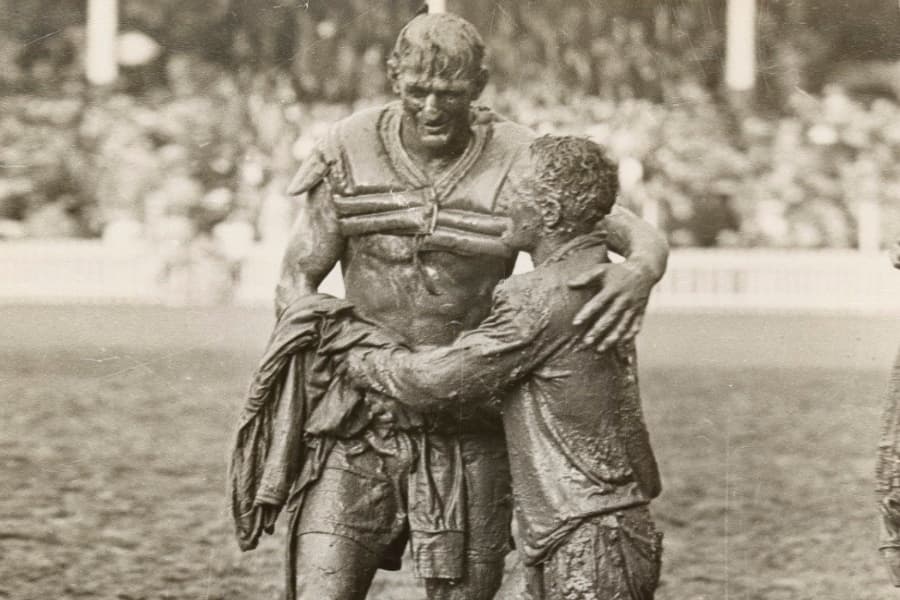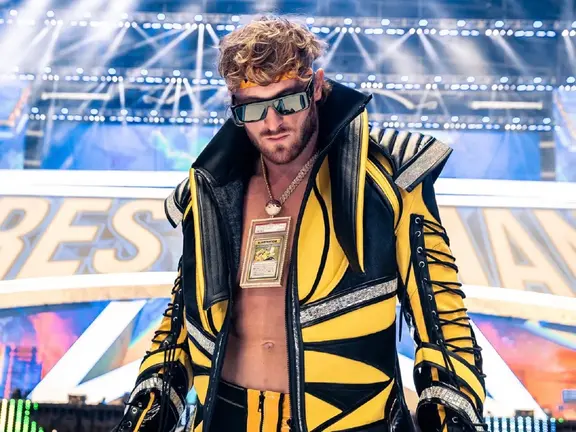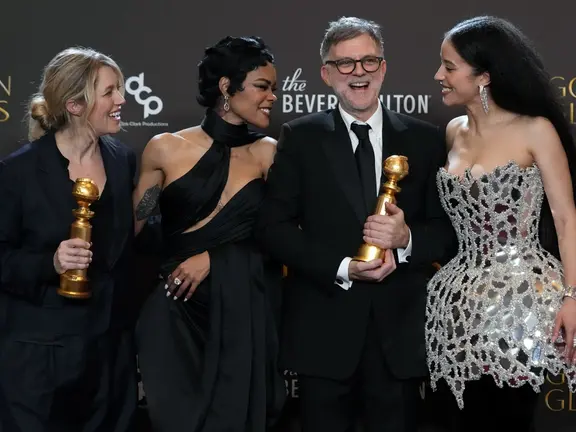
Published:
Readtime: 8 min
Every product is carefully selected by our editors and experts. If you buy from a link, we may earn a commission. Learn more. For more information on how we test products, click here.
It’s rugby league’s most famous photograph and one of the most iconic images in Australian sport. Snapped by John O’Gready after the 1963 NSWRL grand final at the SCG, ‘The Gladiators’ depicts St George captain Norm Provan and Western Suburbs counterpart Arthur Summons’ mud-caked embrace.
‘The Gladiators’ has been the basis for every premiership trophy since 1982 – a timeless moment immortalised in bronze – and remains a symbol of rugby league camaraderie and sportsmanship.
But how much do you know about the figures and the circumstances behind the photo?
The Men
Norm Provan had already achieved all-time great status by the time the 1963 grand final rolled around. The towering second-rower debuted for St George as an 18-year-old in 1951, made the first of 18 Test appearances for Australia three years later, and featured prominently in the first 10 of the Dragons’ incomprehensible streak of 11 straight premierships from 1956-66.
‘Sticks’ was retrospectively awarded the Clive Churchill Medal for his performances in the 1957-58 and ’63 grand finals, while he succeeded legendary Saints captain-coach Ken ‘Killer’ Kearney in 1962, eventually retiring in 1965 after a then-record 256 first-grade appearances. In 2008, Provan was named in the Australian Rugby League’s Team of the Century, while 10 years later he was (many say belatedly) inducted as an Immortal.
RELATED: Check out the Top 10 NRL Grand Final moments ever
Arthur Summons’ tenure in rugby league was relatively brief, but he made a monumental impact. A flyhalf in 10 Tests for the Wallabies in 1958-59, Summons was lured to rugby league by Wests in 1960 and became a dual international the following season. The halfback/five-eighth played in the first of three straight grand final losses to the Dragons in 1961 – captaining the Magpies in the latter two – and skippered Australia for the first time in a famous third-Test win over Great Britain in 1962. Immediately after the epic ’63 grand final, Summons captain-coached the Kangaroos to their first Ashes success in England for more than half a century.
The wily playmaker, lauded as one of the game’s great leaders, departed Sydney at the end of 1964 to take up a captain-coach position in the bush. Summons’ high-achieving five-season stint in big-time rugby league was enough to earn him a place in the NRL Hall of Fame.
John O’Gready is synonymous with ‘The Gladiators’ shot – which was awarded Sports Picture of the Year for 1963 – but he is revered in his field as one of the great sports photographers, and among the finest snappers generally. ‘Happy’ O’Gready joined The Sun-Herald team in 1957 and was 27 at the time of the 1963 grand final, working with Fairfax until the late-1980s. He passed away in 1999.
The Match
The 1963 grand final has gone down as one of the most dramatic and controversial matches in the code’s history.
Despite losing the 1961-62 deciders, Western Suburbs was well-placed to release seven-time defending champ St George’s iron grip on the premiership, twice getting the better of the Dragons during the home-and-away rounds and winning the major semi-final 10-8. With internationals Noel Kelly, Kel O’Shea, Peter Dimond and Don Parish – along with future coaching Svengali Jack Gibson – supporting mastermind Summons, the Magpies appeared to have found the key to upsetting the star-studded Saints juggernaut.
Heavy rain in the lead-up to the grand final reduced the Sydney Cricket Ground to a quagmire (though it did not stop a then-record crowd of almost 70,000 from packing out the venue). Players on opposing teams were virtually indistinguishable from one another within minutes.
St George emerged from the muddy slugfest 8-3 victors, with the match hinging on a wildly contentious try to champion winger Johnny King 15 minutes from fulltime.
Magpies players were adamant they heard referee Darcy Lawler call ‘held’ when King was brought down near the touchline, but the whistle-blower remained silent when King got up and darted 30 yards to the corner for the match-sealing try. Lawler also disallowed a seemingly fair Wests try during the first half.
Gibson later claimed that Lawler placed a wager on the grand final and stood to win £600 if St George won. The veteran ref’s retirement announcement immediately afterwards did little to dispel speculation and innuendo around his role in the result. Lawler – and the ’63 grand final – has been shrouded in infamy ever since.
The Moment
Ironically, Provan and Summons barely knew each before the match. But the mutual respect and mateship emanating from the pair’s cheerful post-match embrace is what makes O’Gready’s photo so enduring.
The contrast of the tall, statuesque Provan and the diminutive Summons – opposing skippers with barely a struck match between their respective displays – illustrated rugby league’s inclusiveness of all shapes and sizes.
Somewhat in contradiction of everything ‘The Gladiators’ image has come to stand for, a chastened Summons was purportedly telling Provan through gritted teeth that St George had been ‘lucky to win’ the match.
Incredibly, the photo did not even make it onto The Sun-Herald’s front page. It ran on page three, under the incongruous heading of ‘Who’s That?’ Few rugby league fans would fail to name the sodden warriors 56 years on.
The Aftermath
‘The Gladiators’ truly took on mythical prestige when the inaugural Winfield Cup trophy was modelled on the photo in 1982 – the first year of the cigarette company’s 14-season reign as the premiership’s chief sponsor. The trophy was modified for the 1996-97 Optus Cup and again for the NRL’s foundation season in 1998, but the cast of Provan and Summons has remained the central feature.
“It’s surreal, what happened from that photo being taken,” Summons said at the release of Norman Tasker’s 2013 book The Gladiators. “Our images being used for the premiership trophy … it’s beyond my ability to explain it. The mud helped make it, we look like statues and a statue they made from it. We’re epitomised for as long as they play for that trophy. We’ll be long gone and they’ll still be playing for it because it is rugby league.”
Perhaps the most heart-warming hangover from the photo is the close friendship Provan and Summons developed, which now spans more than half a century. The beloved duo have made appearances together at the Dally M awards, ensuring plenty of laughs – most courtesy of Summons’ sardonic wit – and a few poignant moments.
The people’s choice award at the Dally Ms was renamed the Provan-Summons Medal in 1998, while they were thrust into the spotlight again in 2013 when the NRL trophy was officially renamed the Provan-Summons Trophy to mark 50 years since that fateful grand final.
There can be an argument made that the photo, and their resultant intrinsic association with rugby league excellence, has exaggerated Provan’s and Summons’ actual greatness as players. Though an absolute colossus of the code, Provan was listed 26th in an expert-voted list of the top 100 players of all time by Rugby League Week in 1992, and 32nd when The Daily Telegraph produced a similar countdown in 2000. Yet he became the 12th Immortal in 2018 after years of fervent lobbying from fans and pundits. Summons was left off both aforementioned lists, yet was named one of Australian Rugby League’s 100 greatest players during the 2008 Centenary celebrations.
But there can be no debate about their rank as rugby league heroes and the embodiment of much of what the game should be about.
Meanwhile, the contribution of the comparatively anonymous third party that made ‘The Gladiators’’ legacy possible has never been forgotten. ‘‘I think we should really be toasting the photographer John O’Gready … he got it through all the mud and rain that day,’’ Summons said at Cronulla’s 2016 grand final lunch.
You’ll also like:
- INTERVIEW: Wendell Sailor on State of Origin and Mastering the Art of the Sledge
- INTERVIEW: Anthony Minichiello on Fatherhood, the Roosters and Life in Lockdown
- INTERVIEW: Kalyn Ponga On Footy and His New Contract
- An In-depth Look at How to Fix Australian Rugby
- 18 Best Australian Sports Blogs and Websites
General FAQ
The St George and Australian Test legend, Norm Provan, played in 10 winning grand finals from 1956-1965, the last four as captain-coach, as well as 14 Tests.
The Provan-Summons Trophy is the NRL’s main prize, awarded to the team that wins the premiership































Comments
We love hearing from you. or to leave a comment.